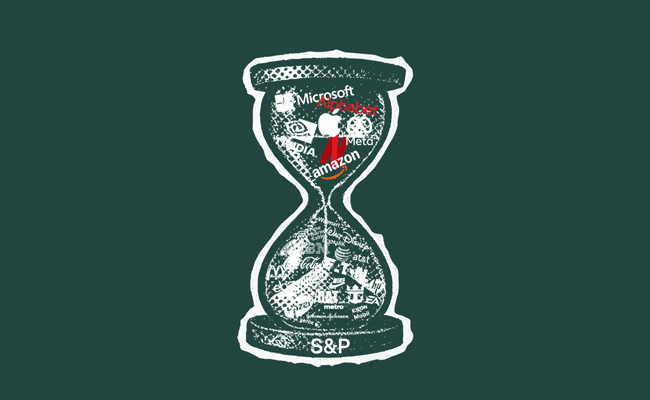I studied electrical and computer engineering. Early on, we learnt about signal-to-noise ratio – the measure of a desired signal compared to background interference.
As a start-up founder, I’ve found the concept invaluable. The ability to focus on the signal and filter out the noise is critical.
Recently, I helped someone decide what to do with the proceeds from selling shares. Their first instinct was to invest in a product suggested by a financial adviser. When I asked why, the answers were the usual: it was “conservative” and “diversified”. My only question back was: “What has been the net return?” The answer, sadly, was unknown.
James Carville, Bill Clinton’s campaign strategist in 1992, drilled home a simple message to staff: “It’s the economy, stupid.” It cut through complexity and forced focus. If we applied that same clarity to investing, the message would be obvious: it’s all about the net return.
Why net return matters
The financial industry often feels unnecessarily complex, swathed in jargon and acronyms designed to make ordinary people think they need an expert to decipher it all. We’re sold stories, star fund managers and promises of market-beating performance. But if you want to empower yourself and make genuinely wise investment choices, you only need to master one simple concept: the net return.
It’s the number that truly matters and is simple to grasp: the performance of your investment minus all the costs. Not the glossy return fund managers prefer to highlight, but what’s left after costs.
Yet far too often this fundamental concept gets buried under layers of slick marketing materials and conversations that focus on everything except what lands in your pocket.
The supermarket test
Think about how you shop for groceries. You see two bags of coffee. One: 250g for R90. The other: 400g for R120. Which is a better value?
You don’t just pick the bigger or the cheaper. You calculate: R36 per 100g versus R30 per 100g. Suddenly, the answer is obvious.
Investing should be no different. The gross return is like the size of the bag – it tells you the investment generated before anyone takes their cut. The total cost is the price you pay. Your net return is the ultimate value you receive. Too many investors are dazzled by a fund advertising a high gross return, failing to see that exorbitant fees are eating away at their profits, leaving them with a terrible “price per unit”.
A fund that grows 10% but charges 2% leaves you with 8%. Another that grows 9% but charges 0.2% leaves you with 8.8%. The second is better, even though its headline looks weaker.
Minor differences compound dramatically. A 1% annual difference means roughly 22% more wealth after 20 years, and 35% more after 30 years. This isn’t about beating the market or finding the next hot investment theme – it’s about ensuring costs don’t silently erode your financial future.
The numbers don’t lie. According to Morningstar’s Active/Passive Barometer, only 21% of actively managed US funds (9,204 in total) beat the index over the 10 years to June 2025. So, one should question whether the headline growth metrics are indeed consistent over the long term.
Going deeper: check performance and costs
Of course, there’s nuance. That’s why it’s worth looking at the fact sheet of any fund you’re considering. Two things matter: the annualised performance over one, three, five or 10 years; and costs – the total expense ratio (TER) or effective annual cost (EAC), the percentage you pay each year for management, administration and other fees.
By separating performance from cost, you can see both who’s delivering and who’s quietly taking the biggest slice of your returns.
The industry wraps investing in smart-sounding words that don’t help ordinary investors with their most important decision: where their money will grow best. Complexity and jargon like “alpha”, “beta”, “Sharpe ratios” and “benchmark tracking error” benefit providers, not you.
Some funds charge upfront fees, others annual fees, and others performance fees. Some bundle costs, others break them down. The effect is the same: making comparison harder, and higher costs easier to hide.
A simple rule
When evaluating any investment, demand transparency. Don’t accept vague lines like “competitive fees”. Ask for the numbers.
Then apply three steps:
- Get both the annualised performance and the annual cost (TER or EAC).
- Subtract cost from performance to get the net return.
- Choose the investment with the higher net return.
It’s no different from checking the unit price on the supermarket shelf. Only here, the stakes are far higher: your retirement, your child’s education, your future wealth.
Your money, your choice
The industry thrives on intricacy because it creates dependency. Many investors simply accept what their bank, adviser or employer offers. Flashy features and smartly dressed gross returns distract from the simple arithmetic that matters.
Yes, professional advice has its place. But blindly following recommendations without understanding net return is like buying a car based solely on the salesperson’s enthusiasm.
You don’t need to know every market nuance. You just need to focus relentlessly on the one number that matters: the return you actually get to keep.
So, before you invest, ask the only question that puts you back in control: “After all fees are deducted, what is the net return?”
Because in the end, that’s the signal. Everything else is just noise.
Top image: Rawpixel/Currency collage.
Sign up to Currency’s weekly newsletters to receive your own bulletin of weekday news and weekend treats. Register here.














I like.
Note to Editor: Get more articles from Thomas Brennan
1) Not every claimed return, EAC or TIC are true – the numbers you adding and subtracting could be BS
2) A rising tide lifts all ships – when the world’s markets soar, even a lame asset manager looks like a hero. But then the tide goes out, and the “best manager” – the highest net return – takes your money Venezuela and leaves you high and dry….
3) Even a broken clock is right twice each day – every manager gets lucky, but you dont get to choose to retire or be retrenched when they are “lucky”.
You need better smarts than this.